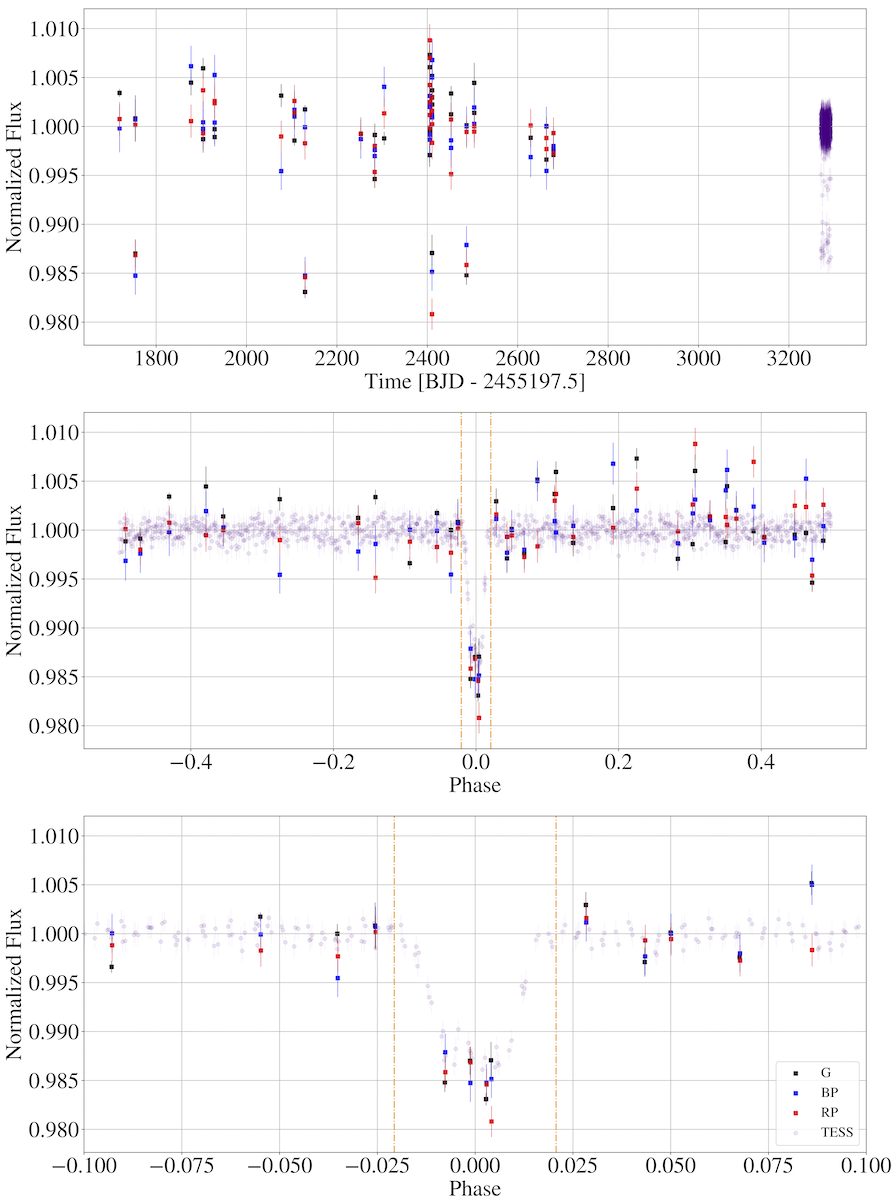10.10.4 Quality assessment and validation
Verification
Candidates were further excluded by examining their parameters, such as orbital period, planet radius, and transit duration. In Gaia DR3 we only included candidates that were within the hot-Jupiter area of this parameter space, compared to known exoplanets.
Validation
Photometric validation was performed by examining light curves from TESS Full-Frame Image (FFI) data (Ricker et al. 2014), if available. As an example, the combined photometry of Gaia and TESS for source_id 3026325426682637824, now called Gaia-1b, can be seen in Figure 10.27, showing the exoplanetary transit.

This candidate was confirmed to be a hot Jupiter (see Gaia image of the week of 30 March 2021) by radial velocity measurements from the high-resolution spectrograph PEPSI (PI Klaus G. Strassmeier) at the Large Binocular Telescope observatory in Arizona (USA), courtesy of observing time from the Italian Director’s Discretionary Time program.